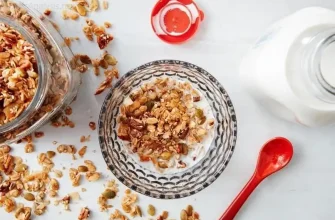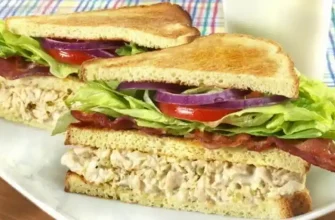Doing laundry. It seems like a simple enough task, doesn’t it? You toss your clothes in the washer, press a button, and move on with your day. But if you’ve ever stood in front of a washing machine, wondering if you’re about to ruin that favorite sweater, you know there’s a bit more to it. Whether you’re new to laundry or just want to sharpen your skills, this guide will give you all the tips, tricks, and warnings you need to master this household chore.
I’ve been doing laundry for decades (yes, decades), and over time, I’ve learned a thing or two about what works, what doesn’t, and what can go terribly wrong. We’re talking about stains, color bleeding, fabric care, and everything in between. Don’t worry, I’ll break it all down for you in a way that’s as clear as your favorite pair of freshly washed jeans.
The Basics of Laundry: Sorting, Washing, and Drying
Before diving into the specifics, let’s review the basic steps. They’re simple, but knowing how to do them right is key to ensuring your clothes come out looking great.
1. Sorting Clothes
Not all clothes are made equal, and the same goes for washing. If you’ve ever thrown a red shirt in with your whites and ended up with pink underwear, you already know why sorting is important. Here’s how to get it right:
- By color: Always separate whites, darks, and colors. This prevents colors from bleeding onto lighter fabrics.
- By fabric type: Wash heavy fabrics like towels and jeans separately from delicate items like lingerie or wool.
- By soil level: If some clothes are particularly dirty, like workout clothes or work uniforms, it’s best to wash them separately to avoid transferring grime onto your cleaner clothes.
2. Choosing the Right Detergent
There are dozens of detergents on the market, from powder to liquid to pods. So, how do you choose?
- Powder detergent is great for general loads and tends to be a bit cheaper.
- Liquid detergent dissolves easily in cold water and is good for greasy stains.
- Pods are convenient and easy to use, but they can sometimes leave residue on clothes, especially if your washer doesn’t use enough water.
The right detergent depends on your washing machine type (high-efficiency or regular), water temperature, and the specific stains you’re targeting.
3. Washing Machine Settings
Most washing machines come with a variety of settings. Here’s a simple breakdown:
- Cold water: Great for colors and delicates. It prevents colors from fading and fabrics from shrinking.
- Warm water: A good middle ground. It works well for everyday items like cotton, sheets, and towels.
- Hot water: Best for whites and heavily soiled items (like bed linens, towels, or workout clothes). It helps to kill bacteria but can cause shrinkage and fading if used too often.
As for the spin speed, a higher speed removes more water, but it can also damage delicate fabrics. If you’re washing delicates, choose a gentler spin.
Common Laundry Problems and How to Fix Them
Even seasoned laundry veterans can hit a snag every now and then. Here are some common laundry problems, with solutions.
1. Stains: How to Deal with Them
Stains are a fact of life, but the key is acting fast. Here’s a quick guide on how to treat various stains:
- Oil or grease: Use dish soap! Dishwashing liquid is great for breaking down grease. Apply it directly to the stain before washing.
- Red wine or coffee: Blot with a paper towel, then soak in cold water. For coffee, a mixture of baking soda and water can help lift the stain.
- Blood: Cold water is your friend here. Hot water sets blood stains, so rinse with cold, then apply hydrogen peroxide to the stain.
2. Color Bleeding
If you’ve ever had a shirt bleed onto your favorite white socks, you know how devastating this can be. Here’s how to avoid color bleeding:
- Always wash new clothes separately for the first few washes.
- Use a color catcher sheet, which helps trap loose dye in the wash.
- If bleeding happens, try soaking the clothes in a mixture of vinegar and cold water to set the color.
3. Shrinking or Stretching Fabrics
This one’s tricky. Certain fabrics, like wool or cotton, have a tendency to shrink if washed incorrectly. The best advice?
- Always read fabric care labels.
- When in doubt, wash in cold water and air dry.
- If something stretches out (like your favorite sweater), try gently reshaping it and laying it flat to dry.
Drying: Air Dry vs. Machine Dry
Drying clothes can be just as tricky as washing them. If you’ve ever had your favorite sweater shrink to child size or your jeans lose their shape, you understand the importance of proper drying.
- Air drying is the gentlest option. Lay delicate items flat to dry, and hang other clothes like shirts and dresses to prevent wrinkles.
- Tumble drying works for many clothes, but be sure to check care labels for instructions. Some fabrics, like wool and silk, should never go in the dryer. When using the dryer, always clean the lint trap to ensure efficiency.
The Environmental Impact of Doing Laundry
Now, let’s talk about the planet. Laundry isn’t just about clean clothes; it’s also about minimizing our environmental footprint. Here are a few ways to make laundry day more eco-friendly:
- Use cold water: Heating water accounts for about 90% of the energy used in washing clothes. By washing in cold water, you can cut your laundry energy consumption significantly.
- Air dry when possible: Tumble drying uses a lot of energy. By air drying clothes (especially in warm weather), you reduce your carbon footprint.
- Use eco-friendly detergents: Some conventional detergents are full of harsh chemicals. Opt for biodegradable and non-toxic detergents whenever possible.
Final Thoughts
Laundry isn’t rocket science, but it does require a little knowledge and care. From sorting to drying, following the right steps ensures your clothes last longer and stay in great condition. And if things go wrong, remember: nobody’s perfect. Even the most experienced laundry doer will occasionally turn a white shirt pink or shrink a sweater. But with a little know-how, you can avoid the worst of these mishaps and keep your wardrobe in top shape.
Real Opinions on Doing Laundry:
- Anna (34, Germany): “I used to throw everything in one load, but after learning the hard way (hello, pink socks), I’ve started sorting by color and fabric. My clothes last longer, and I don’t have to worry about ruining my favorite pieces.”
- James (50, USA): “I’ve been doing laundry for decades, and I still can’t get my towels as soft as I want. A friend told me to use vinegar in the rinse cycle. It works wonders for both softness and removing any soap buildup!”
- Lina (24, Brazil): “I’ve been using the pods for convenience, but I’ve noticed they don’t always dissolve properly, especially in cold water. I switched to liquid detergent, and it’s been much better!”
- Muhammad (46, Pakistan): “Air drying clothes is the best for me, especially with the hot weather here. It saves energy, and the clothes smell fresh! Plus, I never have to worry about shrinking.”
- Olga (60, Russia): “I’ve learned the hard way that certain fabrics need extra care. Wool, for example, shrinks in a heartbeat. Now I read the labels and use gentle cycles, and it’s made a huge difference.”
There you have it! A laundry guide from start to finish, filled with tips from a seasoned expert. Hopefully, you now feel ready to tackle laundry day with confidence—and maybe even a little less dread. Happy washing!









